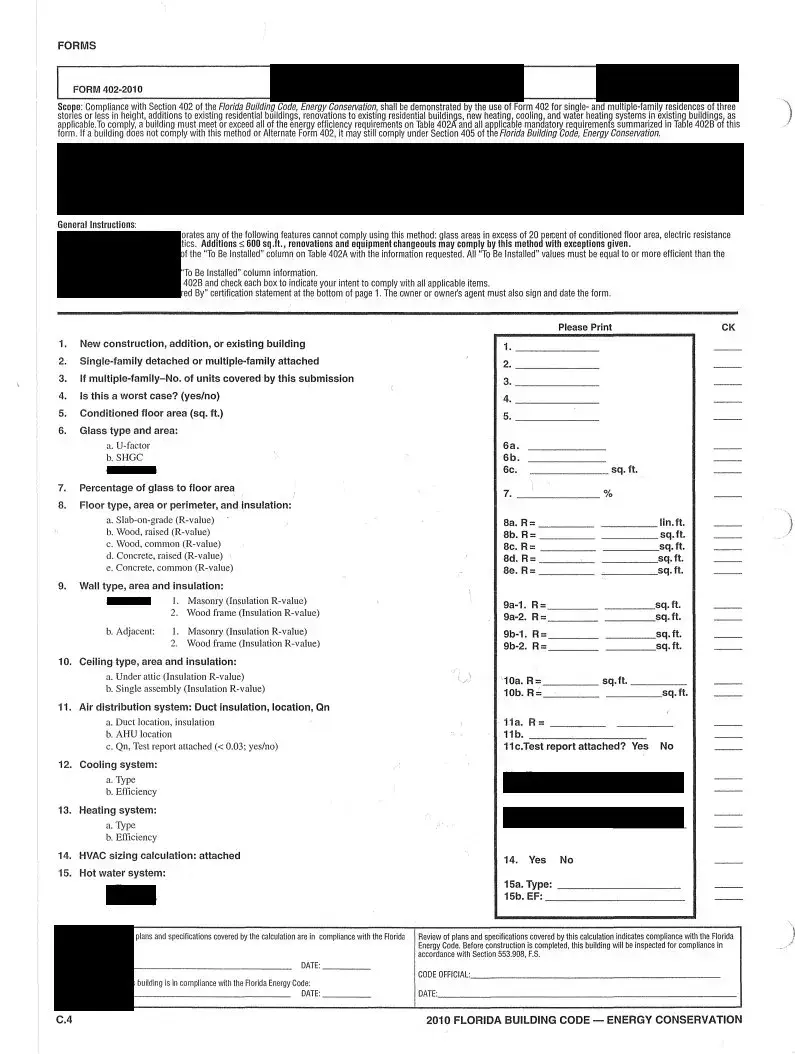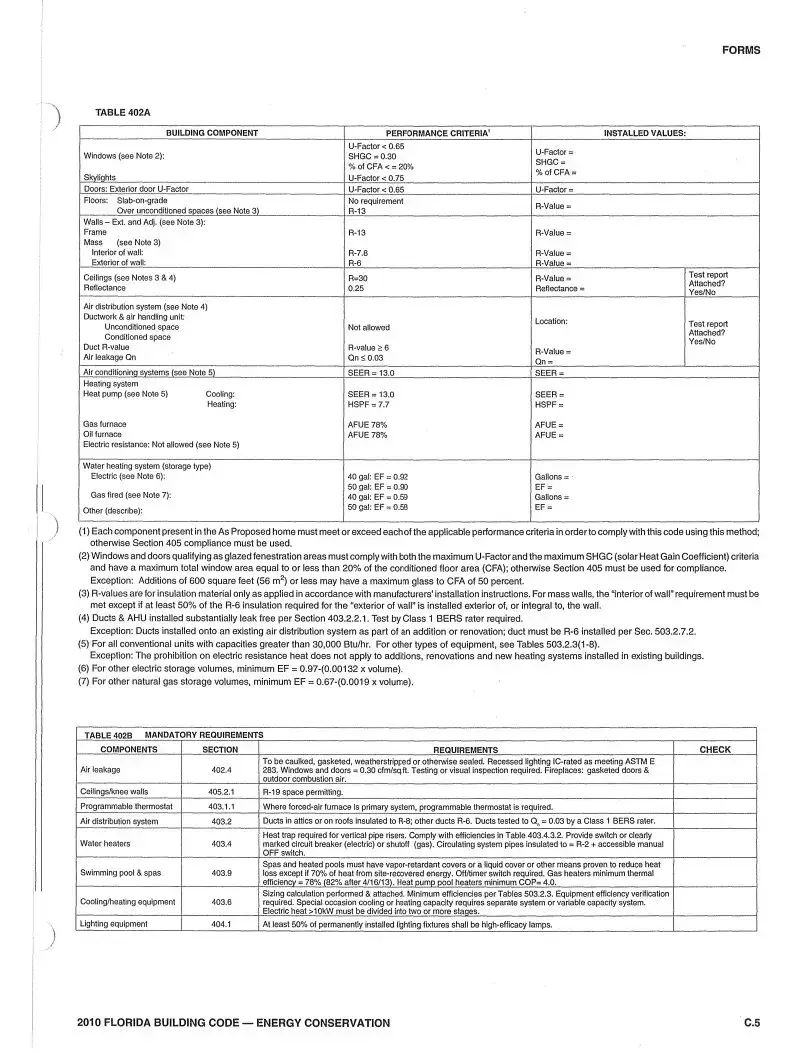What is the purpose of the Florida Energy Form?
The Florida Energy Form is designed to ensure that single- and multiple-family residences of three stories or less, as well as additions, renovations, and new heating, cooling, and water heating systems in existing buildings, comply with Section 402 of the Florida Building Code, Energy Conservation. The form verifies that a building meets or exceeds the specific energy efficiency requirements outlined in Tables 402A and 402B, contributing to energy conservation and efficiency in construction.
Can renovations and additions use the Florida Energy Form for compliance?
Yes, renovations and additions to existing residential buildings can use the Florida Energy Form for compliance, with certain exceptions. Additions of 600 square feet or less, renovations, and equipment change outs may comply using this form. However, constructions incorporating features such as glass areas exceeding 20 percent of the conditioned floor area and electric resistance heat located in attics may require alternative methods for compliance.
What are the steps for completing the form?
To complete the form, fill out the applicable spaces in the "To Be Installed" column on Table 402A with the required information. All "To Be Installed" values must be equal to or more efficient than those mentioned in the column. Then, complete Table 402B, indicating your intent to comply with all applicable mandatory requirements. Finally, the "Prepared By" certification at the bottom of page 1 must be signed, along with the owner or owner's agent’s signature and date, to certify compliance.
How does a building qualify under the glass area requirements mentioned in the form?
For a building to qualify under the glass area requirements, windows and doors that count as glazed fenestration areas must comply with both the maximum U-Factor and the maximum Solar Heat Gain Coefficient (SHGC) criteria. They must also have a total window area that is equal to or less than 20% of the conditioned floor area (CFA). Yet, an exception allows additions of 600 square feet or less to have a maximum glass to CFA ratio of 50 percent.
What happens if a building cannot comply with the Florida Energy Form?
If a building cannot comply with the requirements as stated in the Florida Energy Form or its alternate, compliance can still be achieved under Section 405 of the Florida Building Code, Energy Conservation. This section may provide alternative compliance paths for buildings with specific features or design elements that do not meet the standard requirements outlined in the form.
Are ducts and air handling units required to be tested for leaks?
Yes, ducts and air handling units (AHU) installed must be substantially leak free, as mandated by Section 403.2.2.1. Testing by a Class 1 BERS rater is required to demonstrate compliance. However, an exception is provided for ducts installed onto an existing air distribution system as part of an addition or renovation, where the duct must be insulated to R-6 as per Section 503.2.7.2, but may not require the same level of testing if adding onto an existing system.

 common
common 